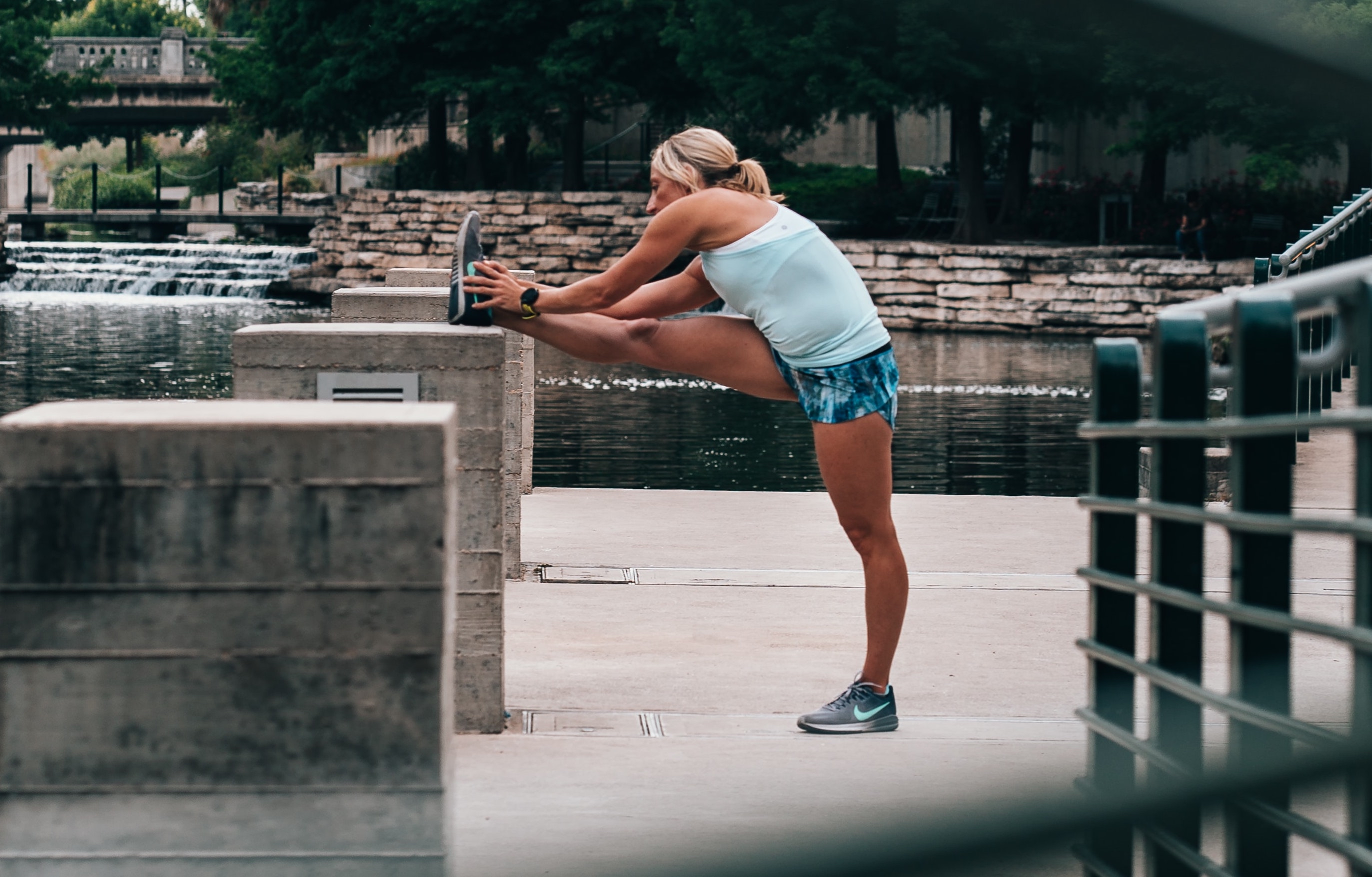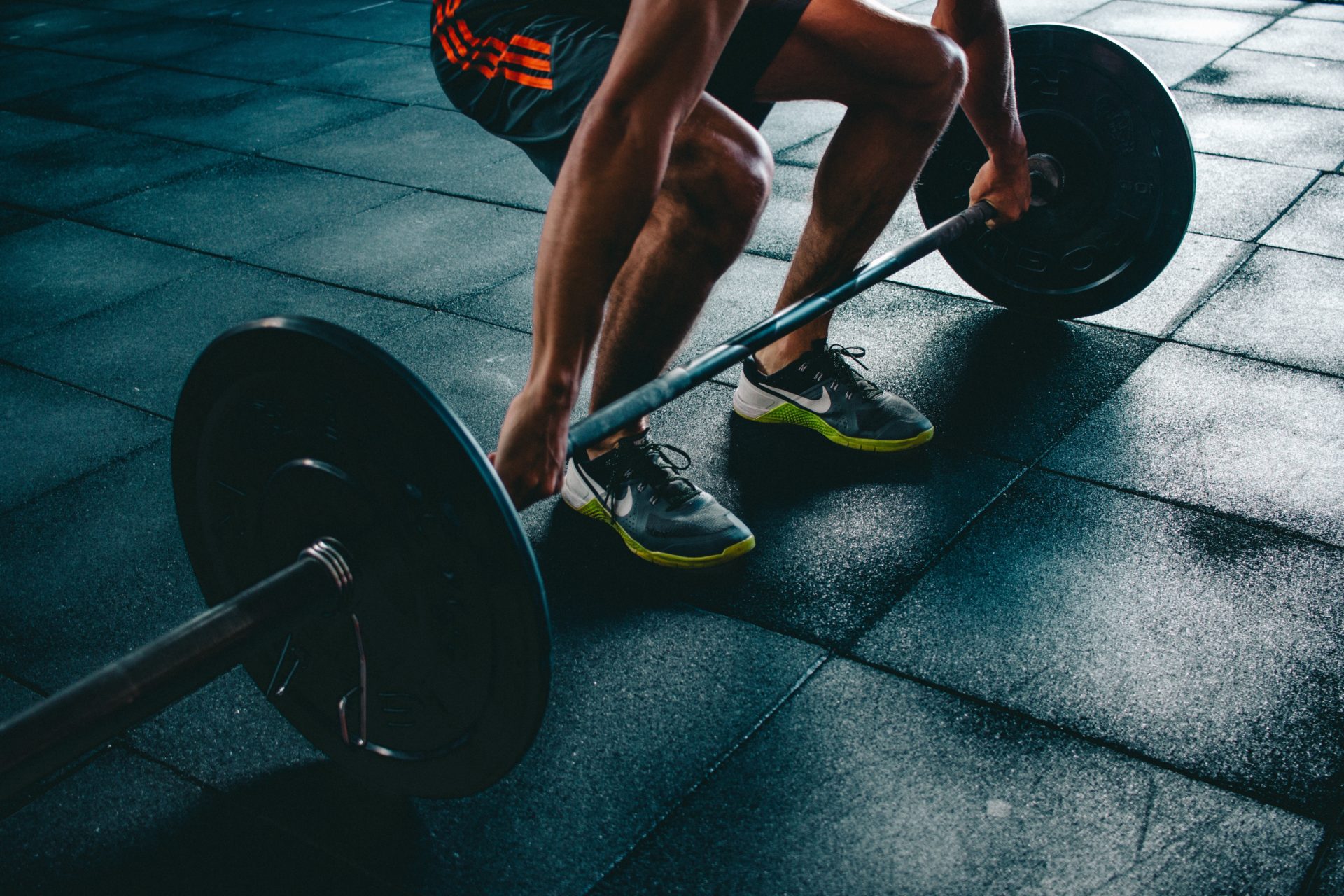Here’s something you won’t hear many trainers admit: A long workout warm-up — you know, the type that asks you to foam roll, stretch, or otherwise activate every muscle imaginable — can backfire.
Before you think we’re railing against common advice for the sake of being counterintuitive, we’re not saying warmup exercises are bad. We’re just saying the way they are implemented is flawed and, in many cases, not supported by research.
In fact, all the way back in 2012 in the International Journal of Sports Physical Therapy, more than 100 studies were reviewed and the takeaway was:
Stretching has not been shown to be effective at reducing the incidence of overall injuries.88 While there is some evidence of stretching reducing musculotendinous injuries,88 more evidence is needed to determine if stretching programs alone can reduce muscular injuries.3
If you want the benefits of warming up without dreading the typical process, we’ve tested dozens of different protocols on thousands of online fitness coaching clients and have found that there is a better way.
Table of Contents
The Benefits of a Warmup
The value of preparing your muscles to move can’t be understated. Your body needs to be ready for the stress of lifting weights, running, or performing a sport. If your muscles are warm and prepared, then they can generate more force and move more weight.

More importantly, preparing a muscle to move, produce force, change direction, or push the limits just doesn’t happen on its own. When you try to force it. That’s when injuries happen.
A cold muscle is like a cold rubber band. To understand, think about the elasticity of a rubber band. You can stretch it, and the more you pull back, the more energy you can generate.
Now, imagine freezing the rubber band overnight. It changes everything. What was once easy-to-move is now stiff; what once took an incredible amount of force to break can now easily snap.
So, warming up your muscles is a good idea. But, how you do it doesn’t need to follow the usual routine.
How To Design A Better Workout Warmup
Most warmup routines are long and onerous (not to mention uncomfortable), which makes it something you dread. And because it’s right there at the beginning of your workout, it can feel like a reason to not show up at all, or you skip the warmup…and find yourself injured. We’ve all been there.
So, what if you changed everything about your warmup routine.
Yeah, you heard us right. We’re not saying you have to stop warming up. As we’ve pointed out, warm-ups are great. But, they aren’t so helpful if they sabotage your workout motivation.
So, we recommend a different option. Instead of a long warmup, we focus on just 1-2 exercises to get started. Here is our favorite 1-exercise warm-up.
And then, thanks to the advice of our longtime friend and contributing fitness expert Tony Gentilcore, we add workout fillers.
Fillers are a way to address trouble spots and tight areas during your workout, simply by doing them between sets. So, instead of worrying about all of the exercises you need to do before starting your workout, you implement strategic exercises into your workout to help you move better, prevent injury, and train harder.
Basically, you make use of your one- to three-minute-long rest periods by doing some easy muscle activation drills or mobility work. (Note the word “easy.” These are not meant to be supersets.)
“We always provide warm-ups for clients, but we also know not everybody does them,” says Born Fitness Head Coach B.J. Ward.
“That’s where fillers come in. We can plug in some movements that are going to help them move better and get stronger pain-free while they rest between sets. It doesn’t “feel” like you’re doing much but we end up sneaking in a lot of extra work in.”
If you’re new to workout fillers, Gentilcore goes a little deeper into the basics in this post, which also covers fillers for deadlifting. In a second post, he explains other techniques to help you squat better.

If you’re already familiar with fillers, then you’ll still want to tune in. Why? Because his deadlift tips are on-point. If you’ve struggled with squats or deadlifts, or just felt “off” whenever you’ve tried them, the mobility drills he shows could help you get moving and grooving better. (And if there’s one thing to know about our man Tony, it’s that the dude can deadlift like a boss.)
The Best Warmup Exercises
If you’re already sold on fillers or just want a great movement to prepare you for your favorite (or hardest) exercises, Coach Ward has your back. Here are some additional moves he recommends as fillers within workouts, or as a primary warmup movement before your workout. (Click a move to see a video demonstration.)
Warmup Exercises For Squats
Warmup Exerciser for Deadlifts:
Warmup Exercise for Bench Press:
Surprised? Here’s Ward on why a lower body mobility move can help you when you bench: “Most of us sit all day. The more mobility work we can throw in to unglue our hips, the better. And secondly, opening up the front of your hips can help you get into a better position on the bench press. We ask lifters to get their feet under their knees and squeeze the glutes during the bench press setup. If you’ve opened up the front of your hips it’s easier to lock into this position.
How to Perform Warmup Movements
For each warmup movement, perform 3-5 reps per side. Do only as many sets as necessary so that you feel a little more fluid, your muscles feel warm, and your range of motion has improved. In many cases, just 1-2 sets will suffice.
While we have these fillers paired with the “big 3 lifts,” you don’t have to bench, squat, or deadlift in order to use them. Try them between sets of any similar upper or lower body exercise.
And remember, for a super-efficient warm-up, here’s our favorite movement that will get your body prepared in less than 5 minutes.
Interested In A Custom Coaching Plan?
At Born Fitness, we know every individual is unique. There’s no one-size-fits-all plan. Our team can develop a plan around your lifestyle to help you reach your goals.
If you like the idea of fillers that we talked about above but aren’t sure where to start, more personalization and hands-on support through our online coaching program may be right for you. Every client is assigned two coaches — one for nutrition and one for fitness. Find out more here.
READ MORE:
The Surprising Science Benefits of The 5-Minute Walk
The Best Stretch For Your Body (In Less Than 5 Minutes)

Adam Bornstein is a New York Times bestselling author and the author of You Can’t Screw This Up. He is the founder of Born Fitness, and the co-founder of Arnold’s Pump Club (with Arnold Schwarzenegger) and Pen Name Consulting. An award-winning writer and editor, Bornstein was previously the Chief Nutrition Officer for Ladder, the Fitness and Nutrition editor for Men’s Health, Editorial Director at LIVESTRONG.com, and a columnist for SHAPE, Men’s Fitness, and Muscle & Fitness. He’s also a nutrition and fitness advisor for LeBron James, Cindy Crawford, Lindsey Vonn, and Arnold Schwarzenegger. According to The Huffington Post, Bornstein is “one of the most inspiring sources in all of health and fitness.” His work has been featured in dozens of publications, including The New York Times, Fast Company, ESPN, and GQ, and he’s appeared on Good Morning America, The Today Show, and E! News.
Thank you sharing such a valubale information.
Happy to provide value, thanks for reading along!
I usually read about warm-ups and stretches before a workout. Warming up improves blood flow to the muscles and prepares us for physical activities.
Hello
We all know how important physical exercise is for all of us. I got more ideas after reading your article. Thanks for nice content.
stretching is hugely important. doing dynamic and also at the start and end of every workout is crucial. They can’t stop you from getting hurt but they can definitely help stave off injuries. especially as we get older we need to warm up.
Agreed. However, most people don’t need to do extended static stretching at the beginning of their workouts. My take? Stretch 1-2 tight areas if you’d like before workout but then save the rest of your starching for post-workout or even off days.
not enough people warm-up. they go straight into the exercise and can potentially cause an injury. Now it’s not as if warming up will stop you from getting injured either but you need to dynamically warm up before you start an exercise routine.
We agree. Outside of great form, warming up is your best shot at training pain-free for a long time.